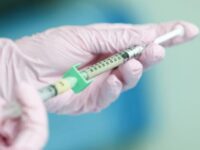Everyone enjoys the summer days when the sun shines and there isn’t a cloud in the sky. Some choose to soak in the sun, many use sunscreen, and others, well, burn. Clothing, sun-avoiding behaviors, and sunblock are methods that offer sun protection, yet many individuals fail to implement any. Various scientific studies reveal data on consumer sunblock use, SPF effectiveness, and concerns over sunscreen ingredients and their health effects. Although the controversy surrounding SPF has presented opposing opinions, following scientific data is key to making informed decisions on skin protection.
Those who choose not to administer sunscreen or reapply may be unaware of the severe damage the sun inflicts on the skin.
Those who choose not to administer sunscreen or reapply may be unaware of the severe damage the sun inflicts on the skin. The sun emits ultraviolet (UV) radiation invisible to the human eye in two forms, UVA rays, and UVB rays. UV light is attracted to melanin — a pigment in the skin that darkens to protect cells. This results in a tan if sufficient melanin is present or an inflammatory response turning the skin red if absent. Although UVA is responsible for tanning, it is also responsible for skin aging and damage. On the other hand, UVB damages cell DNA and primarily contributes to sunburn. Nevertheless, both wavelengths contribute to skin cancer.
When applied as directed, wearing sunscreen with an SPF of 30 will protect your skin from sunburn 30 times longer than without sunscreen.
To build a protective layer from the sun and its rays, sunscreen containing sun protection factor (SPF) — a barrier that measures the amount of UVB required to inflict a burn on protected versus unprotected skin — is applied. When applied as directed, wearing sunscreen with an SPF of 30 will protect your skin from sunburn 30 times longer than without sunscreen. Higher SPF results in a lower percentage of UV rays radiated on the skin. The SPF value refers primarily to the amount of protection given from UVB rays. Nevertheless, UVA contributes to sun damage and is blocked by sunscreen labeled as “broad spectrum.” Therefore, broad-spectrum sunscreen is most effective when trying to evade skin damage if applied as directed.
Confusion surrounding SPF is prevalent among consumers. A paper in the British Journal of Dermatology offers clarity to users by presenting a comprehensive look at SPF efficacy, how to measure it, and inconsistencies in SPF data that contribute to confusion. Results from SPF testing in Europe and the United States are incongruent and reveal an over-exaggeration of SPF in American sunscreens. The use of two different methods to test SPF — in vivo and in vitro — also accounts for data discrepancies. SPF can be categorized by general protection levels starting at SPF 5 to 10 with low protection and maxing at SPF 50 with very high protection. According to the paper, UV transmission is a much better indicator of SPF efficacy than UV radiation filtered. The UV dose transmitted in the skin, measured in photons, reduces from 6.7 at SPF 15 to 3.3 at SPF 30. Therefore, contrary to common belief, SPF 30 is twice as effective than SPF 15 even though the percent of UV dose filtered decreases by only 3.4 percent between the two SPF values. Misinterpretations of SPF data and inconsistencies fuel consumer distrust.
Climbing SPF values in the market leave users reaching for the “best” product on the shelf; however, concerns over SPF legitimacy leave many believing that the race to the top is a classic marketing scheme.
Climbing SPF values in the market leave users reaching for the “best” product on the shelf; however, concerns over SPF legitimacy leave many believing that the race to the top is a classic marketing scheme. Although SPF 50 is more effective than lower SPFs, individuals don’t apply sunscreen frequently or thick enough to achieve complete protection. Human behavior is a huge factor driving the problem. Unease over SPF values, no matter how high, is futile if sunscreen is not applied correctly. The directed usage establishes a 2 milligram per square centimeter layer of sunscreen evenly distributed to achieve the promised protection. Although SPF concerns are a prominent factor hindering sunscreen application, it is also vital to pay attention to other barriers to sunscreen use, like concern over ingredient toxicity and the damage it inflicts on health and the environment.
Unease over SPF values, no matter how high, is futile if sunscreen is not applied correctly.
SPF values instill a sense of security in users who feel less inclined to reapply or avoid the sun. The hyperfocus on SPF values overlooks proper application and the importance of incorporating other methods of sun protection like avoiding the sun or wearing long-sleeve clothing. Additionally, it neglects the importance of using broad-spectrum sunscreen to achieve uniform sun defense. In the end, there should be less emphasis on SPF value and more on proper usage and broad-spectrum technology to prevent skin cancer, early aging, and sunburn.
Sources:
British Journal of Dermatology (2009). DOI: 10.1111/j.1365-2133.2009.09506.x
Image courtesy of Wikimedia Commons



